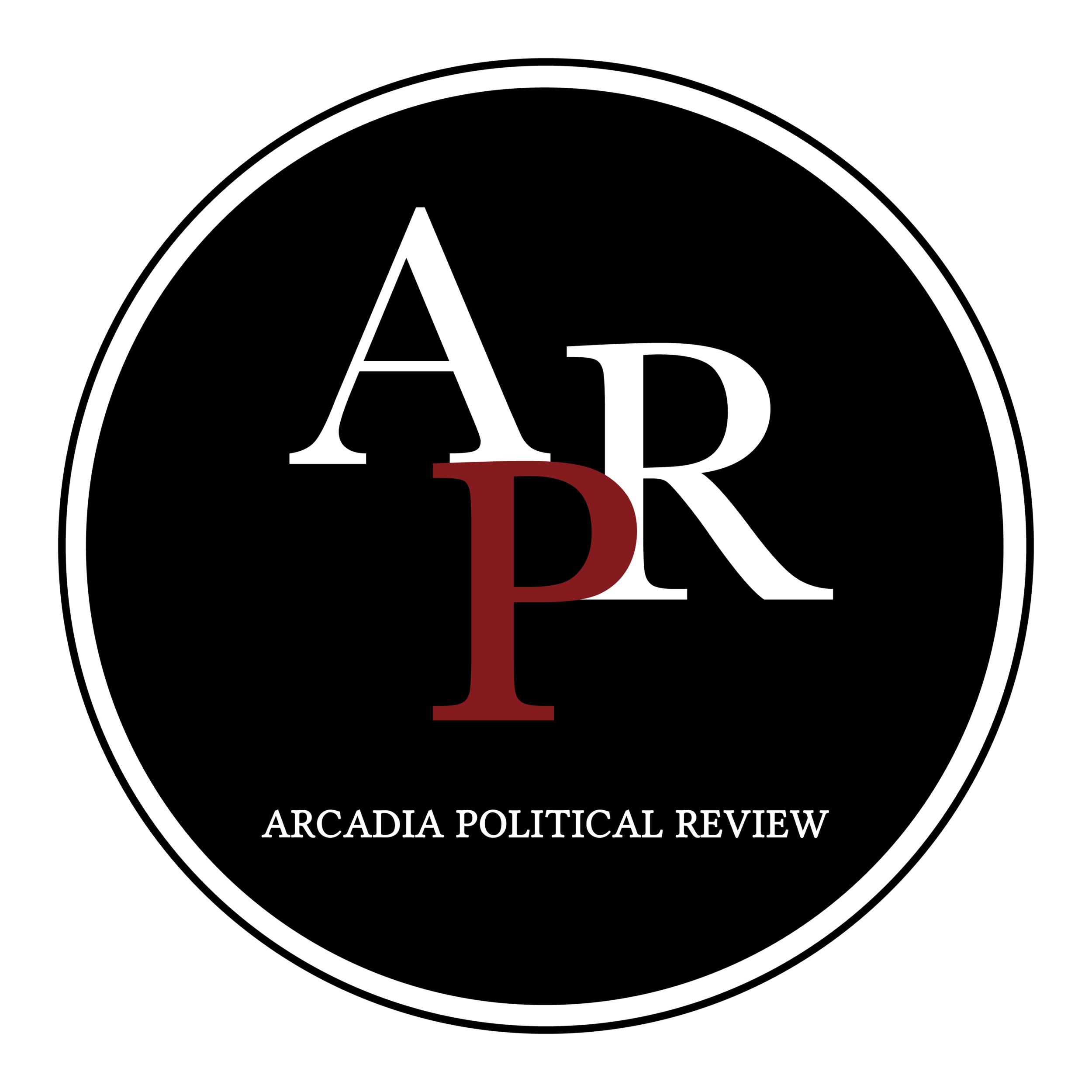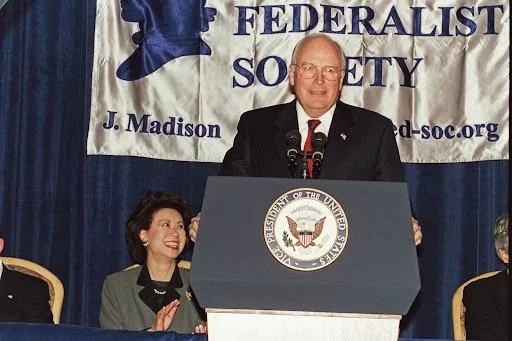Red Scare: The Rise of the Federalist Society
Image source: Wikimedia Commons
“You know, the hearings matter so much less than they once did. We have the tools now to do all the research. We know everything they’ve written. We know what they’ve said. There are no surprises.” -Leanord Leo, Co-Chairman and Former Executive Vice-President, Federalist Society
In June 2022, the U.S. Supreme Court decided Dobbs v. Jackson, a landmark case overturning the constitutionally protected right to an abortion decided almost fifty years prior in Roe v. Wade. This was no surprise to most, a fate sealed by the 6-3 conservative supermajority on the Supreme Court.
Nonetheless, the decision to overturn Roe is situated within a broader movement: a concerted effort on the part of conservative lawyers, judges, and legal scholars to exert an outsized influence on the judiciary and the direction of the law. The most prolific organization directly responsible for the makeup of the current Supreme Court—and emblematic of the broader conservative legal movement—is the Federalist Society.
Unelected, unappointed, and in no way beholden to public interest, the Federalist Society today exerts unprecedented influence over the federal judiciary. Of the six conservative Supreme Court Justices—Thomas, Alito, Roberts, Gorsuch, Kavanaugh, and Barrett—the Federalist Society played a role in five of the confirmation hearings and three of the nominations. In order to understand the rise of the Federalist Society, it is crucial to address its foundation and structure.
Genesis
The Society’s foundation is situated within a greater political movement, a reaction to the political dominance of the Democratic Party between 1932 and 1968, leading to the election of conservatives including Nixon and Reagan. Despite finding electoral success, conservative administrations did not yet have enough control over the judiciary to successfully challenge liberal reforms. Thus, the conservative legal movement was born as a reaction to the legacy of the Warren Court. Chief Justice Earl Warren (1953-1969) presided over one of the most liberal Supreme Courts, expanding civil rights and liberties through decisions such as Gideon v. Wainwright, which expanded access to lawyers, Miranda v. Arizona, which created the Miranda rights, and Brown v. Board of Education, which deemed the “separate but equal” clause unconstitutional.
The Warren Court was shaped by an entrenched liberal network made up of members of the judiciary, academic institutions, federal bureaucracy, and public interest law firms. These institutions served as an obstacle and guide for conservative lawyers who in turn developed their own organizations, namely the Institute for Justice and the Center for Individual Rights. Then, the Federalist Society was formed at Yale Law School and University of Chicago Law School in 1982, with a stated mission of nurturing and connecting right-wing students. The Society’s position within the movement was unique, seeking to reshape legal scholarship and ideology. Through a student and future-focused approach, the Society became instrumental in the creation of a new theory for constitutional interpretation, a potent tool for the success of future members.
Structure
Tracing the development of the Federalist Society upon its inception further underscores its capacity for rapid growth. Senator Whitehouse (D-RI), a member of the Senate Judiciary Committee, describes the development of the Federalist Society as threefold, denoting the distinct organizational characteristics of each level:
The law school level functions as a debating society, responsible for promoting right-wing legal scholarship and ideas. Chapters host forums, facilitate networking events and provide educational opportunities with successful society members in different professional realms.
The collegiate level is situated within a parent organization. Functionally a think-tank, this level is responsible for shifting national legal priorities and creating a legal network. This Federalist Society is responsible for producing multimedia and elevating the discourse of “conservative legal luminaries, from Supreme Court Justices, to big name politicians, to renowned legal scholars”.
The third level is the conservative nerve center, a conduit for special interest groups. This level undertakes massive steps to influence the judiciary through political tact, messaging campaigns, and spin. This network seeks to arrange its membership in positions of political and judicial power, in turn reshaping the very foundation of American law.
The organizational structure and network of the Federalist Society become even more complicated when analyzing how the organization is legally incorporated. The Federalist Society is registered as a 501(c)(3) organization, defined as a nonprofit with restrictions on political involvement including lobbying. The organization is governed by a board of directors including Leanord Leo, the visible frontman of the organization’s policy efforts; Steven Calabresi, a former Supreme Court clerk and political operative during the Bush and Reagan administrations; and David McIntosh, a former U.S. Representative from Indiana. It is also led by a board of visitors, formerly including Reagan Attorney General Edwin Meese III, Senator Orrin Hatch, and Appellate Court Judge Robert Bork, whose influence on the Society cannot be overstated.
Within the Federalist Society are practice groups and divisions, essentially standing committees, that cover the policy areas the Society aims to influence. The focuses of these practice groups include: “separation of powers and federalism, free speech and election law, labor and employment law, religious liberties, environmental law, and civil rights”. In 2001, membership in the Society exceeded 40,000 professionals and 5,000 students at over 140 law schools. In the last two decades, membership has doubled.
The Federalist Society’s policy aims are supported by the Judicial Crisis Network (JCN), a 501(c)(4) organization, incorporated with the aim of influencing judicial appointments, and thus legal policy. Led by a former clerk of Justice Thomas, JCN leverages “media campaigns, attack ads, [and] big spending” to achieve its aims.
The Society is further able to influence broad-scope changes in the direction of American law through its network of members. Members of the Society have functioned as a cabal, occupying the upper echelons of the Reagan, Bush, and Trump Departments of Justice and Whitehouse Counsel's Office. During the Bush administration, Federalist Society members, including “Attorney General John Ashcroft, Assistant Attorney General Viet Dinh, Deputy White House Counsel Tim Flanigan, and Associate White House Counsel Brett Kavanaugh,” were responsible for selecting candidates for the federal bench.
In 2016, Leonard Leo cultivated the Trump transition team’s list of potential nominees to fill Justice Scalia’s vacant seat on the Supreme Court. The responsibility of shaping the most powerful court in the U.S. was outsourced, delegated to a partisan entity. The shortlist Leo produced included all three Trump-era SCOTUS nominees. According to J. Joel Alicea, a constitutional law professor at George Mason University, nearly all of the 200 district court, dozens of appellate court, and three Supreme Court nominees in the last administration were sourced from within the conservative legal movement and the Federalist Society.
Conclusion
Since its emergence in 1982, the Federalist Society’s goals and structure have facilitated its explosive growth. The Federalist Society of today is a diversified and well-organized interest group with the ability to fundamentally reshape the makeup of the federal judiciary and the direction of American Law. In the last four decades, the Federalist Society has expanded rapidly, utilizing a complex threefold structure to cater to students, career professionals, politicians, and judges. This approach has positioned the organization at the forefront of the conservative legal movement and enabled its rise to prominence. Without a strong structural foundation, the Federalist Society would not be able to effectively wield the clout and influence it has now garnered.
References
Alicea, J. Joel. “Dobbs and the Fate of the Conservative Legal Movement.” City Journal, April 1,
2022. https://www.city-journal.org/dobbs-and-the-fate-of-the-conservative-legal-moveme
nt.
“The Federalist Society: From Obscurity to Power.” People For the American Way, January 14,
2017. https://www.pfaw.org/report/the-federalist-society-from-obscurity-to-power/.
Rehnquist, William H. “The Notion of a Living Constitution.” Harvard Journal of Law & Public
Policy 29, no. 2 (2006): 401–15.
Somin, Ilya. “Lessons from the Rise of Legal Conservatism .” Harvard Journal of Law and
Public Policy , 1, 32 (2009): 415–30.
Whitehouse, Sheldon. “The Third Federalist Society: U.S. Senator Sheldon Whitehouse of
Rhode Island.” The Official U.S. Senate website of Senator Sheldon Whitehouse of
Rhode Island, March 27, 2019. https://www.whitehouse.senate.gov/news/speeches
/the-third-federalist- society.

